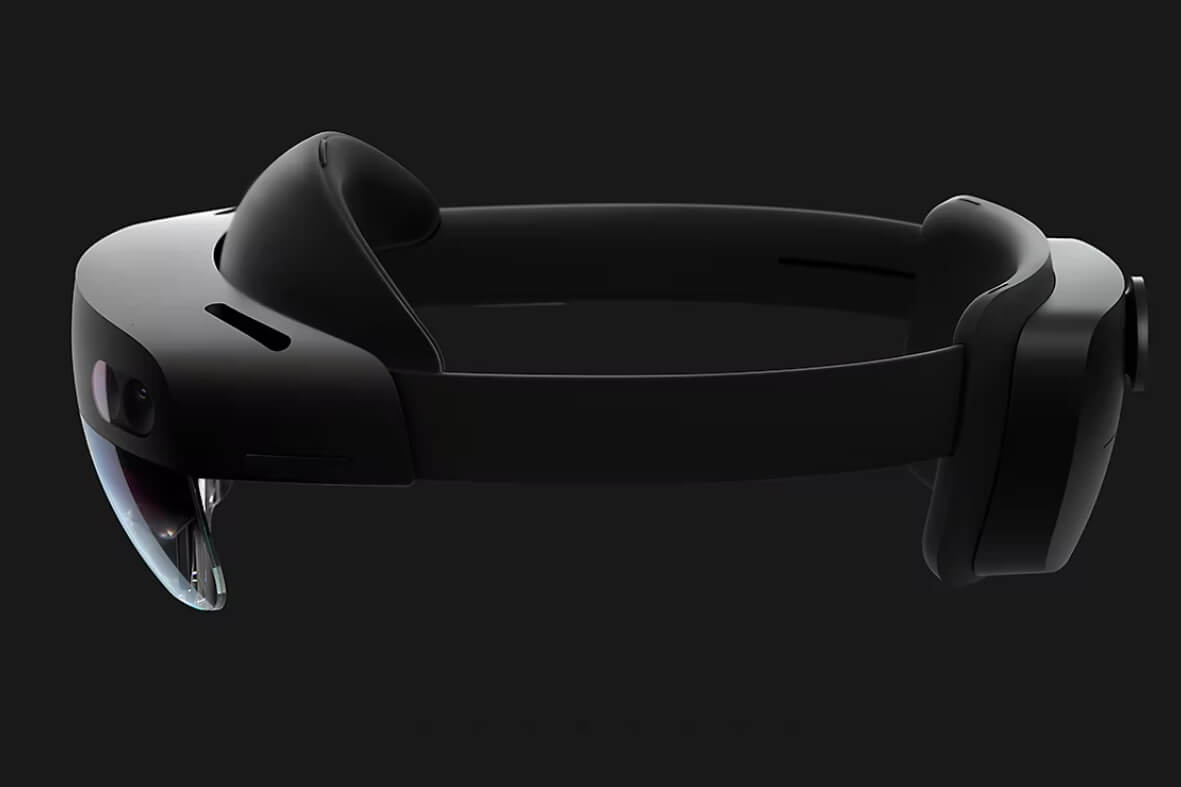The Microsoft HoloLens 2 may not have been popular among AR enthusiasts, but it seems like the fan-favorite Apple Vision Pro still doesn’t come close when you talk of enterprise and industrial applications.
Since its launch, the Apple Vision Pro continues to push itself as probably the best AR headset anyone could have at the moment, but for the price? No! It’s definitely overpriced for its features and offerings.
The HoloLens 2, on the other hand, never appealed to individual consumers because it appeared more like a business-centered AR device than a “fancy” wearable any individual could own.
Enough said. Here’s a comparison of the Microsoft HoloLens 2 and Apple Vision Pro.
Microsoft HoloLens 2 Overview
HoloLens 2 is an AR headset designed and produced by Microsoft. This carefully crafted AR headset is equipped with enterprise-friendly features, technologies, and apps. Launched almost a decade ago (in 2015), the Microsoft HoloLens 2 never made it to the hearts of AR and MR enthusiasts due to its price tag, and even so, it appeared more like a device for businesses than individuals.

The HoloLens 2 has been used in many industries to increase productivity levels. This headset comes standard with enterprise-ready applications; plus, the design is catchy and it offers an ergonomic build.
Well, not like HoloLens can only be used by businesses, a professional seeking efficiency and seamless access to trailblazing tech solutions can actually go for a HoloLens.
The visor has transparent lenses, while the device itself comes with a suite of sensors and 3D audio speakers. You’re getting up to 3 hours of battery life, which is quite impressive.
Apple Vision Pro Overview
The Vision Pro made headlines even before its official launch. It was Apple’s first entry into the VR/MR headset market and launched at a staggering price of $3,500. Apple marketed this device with a new slang, “Spatial Computing,” and used this to catch the attention of many VR enthusiasts looking to try out new VR technological features.
The Apple Vision Pro is a premium mixed-reality headset that flaunts a classic design and is packed with a lot of features. Also, Apple pushes the Vision Pro as its “first 3D camera.” The Vision Pro was made for both commercial and individual applications, with 3D spatial audio. It’s pretty lightweight, and the battery life is around 2.5 hours per full charge.
Everything about the Vision Pro is exclusive; it runs on its own OS and launched with 600+ exclusive apps and games. The Vision Pro headset delivers more pixels than a 4K TV with its custom micro-OLED display system that supports 23 million pixels per eye.
Microsoft HoloLens 2 vs. Apple Vision Pro
These two mixed reality headsets are sold for the same price tag, but there are a lot of differences in how they function and who they’re meant for.
1. Design and build
Both AR/MR headsets really look attractive in their different designs and feel comfortable to wear for a long time. However, the HoloLens 2 looks sleeker in its body, while the Vision Pro appears more comfortable with the adjustable strap at the back.
You will feel more comfortable wearing the Vision Pro, thanks to the Solo Knit Band. Notwithstanding, the build quality of both headsets is top-notch, with spatial speakers integrated at the sides, close to the ear.
2. Display Resolution and Field of View
Both headsets offer AR and VR capabilities, a blend commonly referred to as “mixed reality.” With the Apple Vision Pro, you’re getting up to 3800 x 3000 pixels per eye, which is more than what you can get from a 4K TV. On the other hand, the HoloLens 2 offers 1440 x 936 pixels per eye.
Apparently, the Apple Vision Pro offers more resolutions than the HoloLens 2. Equally, the Vision Pro has a wider field of view (FOV) of 110–120 degrees, compared to the 52 degrees offered by the HoloLens 2. What this implies is that the Vision Pro can “view” more content and objects while you’re standing at a place, but the HoloLens 2 may require you to move your head to see more.
Both devices also have high-quality audio systems that create spatial sound effects. The Apple Vision Pro has two speakers that surround your ears, and the HoloLens 2 has two speakers that sit above your ears.
3. Audio and Mic
Apple advertises its Vision Pro with the slogan “Spatial Audio.” Spatial audio means getting cinematic audio to your ears. Well, the Microsoft HoloLens 2 offers spatial audio, too, with built-in speakers. The HoloLens 2 goes on to integrate up to five (5) mics for sound input and recording; the Vision Pro comes with a six-mic array. Both devices offer decent audio quality and ultra-low-latency sound input for calls, meetings, and recordings.
4. Sensors and cameras
The Apple Vision Pro comes with a plethora of cameras and sensors strategically placed around the device’s body frame. Primarily, the Vision Pro comes with a stereoscopic 3D main camera for capturing spatial photos and video; other cameras and sensors on the Vision Pro include six world-facing tracking cameras, four eye‑tracking cameras, a TrueDepth camera, LiDAR Scanner, four inertial measurement units (IMUs), a flicker sensor, and an ambient light sensor.
Well, the HoloLens 2 didn’t back down, it came with a suite of cameras and sensors too. This included 4 visible light cameras for head tracking, 2 IR cameras for eye tracking, a 1MP time-of-flight (ToF) depth sensor, a couple of IMUs (Accelerometer, gyroscope, and magnetometer sensors), and a primary 8MP still camera that produces 1080p@30fps video.
Talking of cameras and sensors, both devices will give you a run for your money.
5. Features and Tech
Now, this is where there are a ton of differences. The HoloLens 2 comes with enterprise-ready features; Microsoft built the HoloLens 2 around AzureCloud storage and stacked it with its enterprise-friendly applications.
The Apple Vision Pro comes with somewhat regular apps and games a typical retail-minded AR headset would feature. Apple also collaborated with developers to build 600+ exclusive apps and games for the Vision Pro.
HoloLens 2 runs on Windows Holographic OS, while Vision Pro runs on VisionOS. You can easily find VR games to play on Vision Pro, but you can’t say the same for the HoloLens 2.
HoloLens 2 vs Vision Pro: Specifications
| Comparison | HoloLens 2 | Vision pro |
| Brand | Microsoft | Apple |
| Pixels Per Eye Resolutions | 1440 x 936 | |
| Mic | 5 | 6 |
| Speakers | Integrated | Integrated |
| Spatial Audio | Supported | Supported |
| Battery Life | Up to 3 hours | Up to 2.5 hours |
| Operating System | Windows Holographic OS | VisionOS |
| Hand Tracking | Yes | Yes |
| Eye Tracking | Yes | Yes |
| Chip | Qualcomm Snapdragon 850 Compute Platform | 8‑core CPU, 16‑core Neural Engine |
| Storage | 64GB | Up to 1TB |
| RAM | 4-GB LPDDR4x system DRAM | 16GB |
| Field of View (FoV) | 52 degrees | 120 degrees |
| Price | $3,500 | $3,500 |
Microsoft HoloLens 2 vs. Apple Vision Pro: Which is Best?
The HoloLens 2 is in a league of its own as a business-oriented AR headset, while the Apple Pro competes with the Meta Quest series and Sony’s PSVR models. While both are sold for the same price, if you’re going to get a VR headset because you want to explore immersive gaming, the Apple Vision Pro fits into that; on the other hand, if you would want a business gadget with professional tools pre-installed and easily accessible, then the HoloLens 2 is a great choice.

